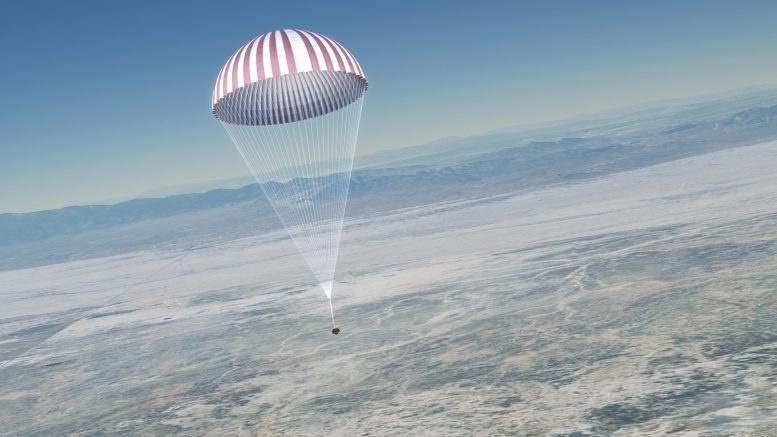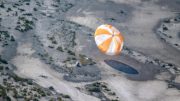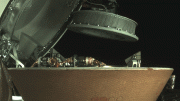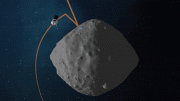
With its main parachute deployed, the sample capsule slowly descends to the Utah desert in this illustration. Credit: NASA’s Goddard Space Flight Center/CI Lab
With the spacecraft diverted away from Earth and traveling toward its new destination, the focus of NASA’s OSIRIS-REx team is on the sample capsule.
OSIRIS-REx and military recovery team members aboard four helicopters and two backup ground vehicles are waiting just outside the capsule’s designated landing area on the Department of Defense’s Utah Test and Training Range in order to get to the capsule as quickly as possible once it touches down (although the recovery plan allows 40 hours to locate it). The team’s goal is to get the capsule to a temporary clean room on the range as soon as possible to protect it from contamination from Earth’s environment.
The capsule will not be visible to the naked eye as it descends and lands because it is small – about the size of a large truck tire – and coming in during daylight hours onto an area that most people can’t access.
There are no location sensors on the capsule, so the team will rely on aircraft and ground instruments to track its descent. Infrared instruments should be able to track the capsule’s heat signature when it’s still high in the sky. This heat comes from the capsule’s interaction with Earth’s atmosphere: Because it will be traveling thousands of miles per hour, the compression of the atmosphere will produce enough energy to envelop the capsule in a superheated ball of fire. The sample will remain safe, since the capsule is protected by a heat shield that regulates the temperature inside, keeping the sample below 167 degrees Fahrenheit, reminiscent of Bennu’s surface.
Radar and optical instruments will track the capsule as well. As soon as it is low enough to be visible to an optical camera aboard a NASA H135 helicopter, the helicopter will provide a live feed of the capsule’s final descent and landing on NASA TV and on the agency’s website.
Once the capsule is on the ground, at around 10:55 a.m. EDT (8:55 a.m. MDT), radar instruments will provide its coordinates, triggering the recovery team to head to the landing location.
NASA’s OSIRIS-REx Mission
The OSIRIS-REx mission was designed to study and collect samples from the asteroid Bennu, a near-Earth object. Launched in September 2016, the spacecraft arrived at Bennu in December 2018. Over the subsequent months, it conducted detailed observations and mapping to select a suitable site for sample collection. In October 2020, OSIRIS-REx successfully touched down on the asteroid’s surface, gathering a sample using its Touch-And-Go (TAG) maneuver. The mission’s primary goal is to return this sample to Earth for comprehensive analysis, shedding light on the early solar system and possibly providing insights into the origins of life. The sample return capsule is expected to land on Earth momentarily.








Be the first to comment on "Landing Imminent After Billion-Mile Journey: The Race To Retrieve NASA’s OSIRIS-REx Treasure"